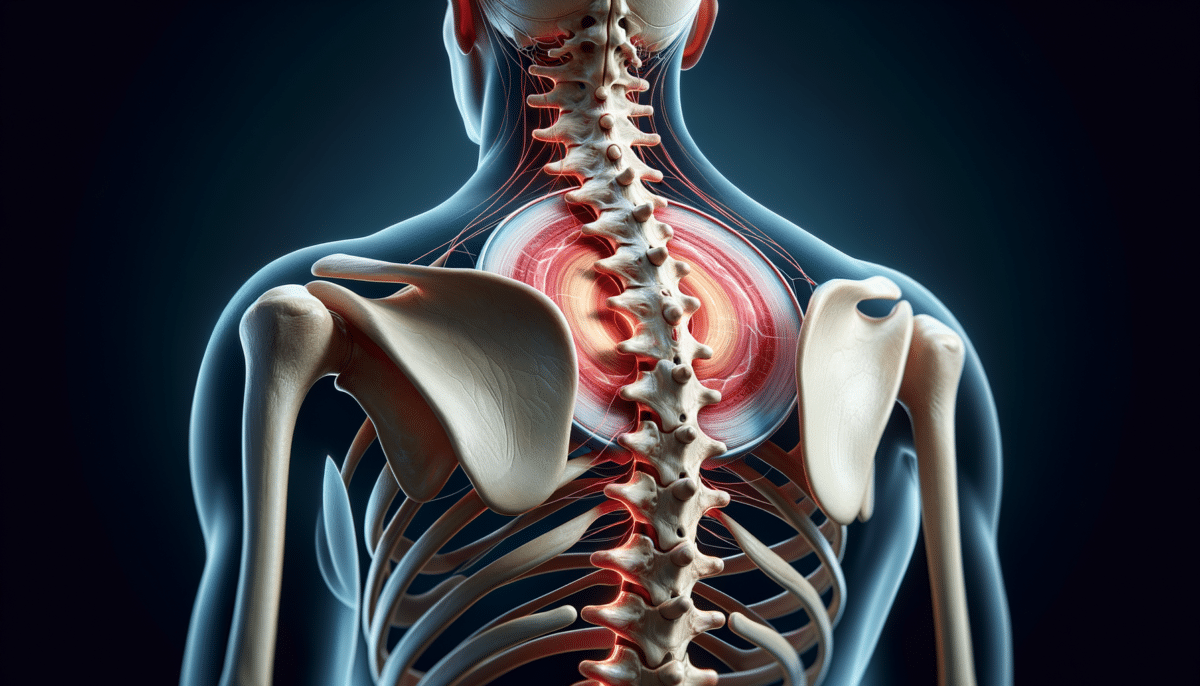Understanding Herniated Discs: Causes and Symptoms
A herniated disc occurs when the soft, gel-like center of a spinal disc pushes through a crack in its tougher exterior casing. This condition can result in significant discomfort, often affecting the lower back or neck, and sometimes radiating to other parts of the body. Understanding the causes and symptoms of a herniated disc is crucial for seeking appropriate treatment.
Common causes of herniated discs include:
- Age-related wear and tear, known as disc degeneration.
- Sudden strain or injury from lifting heavy objects improperly.
- Genetic predisposition to disc problems.
Symptoms can vary, but often include:
- Localized pain in the affected area.
- Numbness or tingling in the limbs.
- Muscle weakness.
- Sharp, shooting pain that extends from the back to the legs or arms.
It is essential to consult a healthcare professional for an accurate diagnosis and to discuss potential treatment options, particularly if the symptoms persist or worsen over time.
Non-Surgical Treatment Options
For those diagnosed with a herniated disc, non-surgical treatments can offer relief and are often the first line of defense. These methods aim to manage pain, improve mobility, and facilitate the body’s natural healing processes without the need for invasive procedures.
Some common non-surgical treatments include:
- Physical Therapy: Tailored exercises can strengthen the muscles supporting the spine, improve flexibility, and reduce pressure on the nerves.
- Medications: Over-the-counter pain relievers like ibuprofen or acetaminophen can help manage discomfort. In some cases, doctors may prescribe stronger medications.
- Chiropractic Care: Some individuals find relief through spinal manipulation and adjustments performed by a licensed chiropractor.
- Injections: Epidural steroid injections can reduce inflammation and pain around the affected nerves.
- Heat and Cold Therapy: Alternating between heat and cold packs can alleviate pain and reduce swelling.
These treatments can be effective in managing symptoms and improving quality of life. However, it’s important to work closely with healthcare providers to determine the most appropriate approach based on individual needs and health conditions.
Cost Considerations and Insurance Coverage
When exploring treatment options for a herniated disc, cost is often a significant factor for many individuals. The expenses can vary widely depending on the type of treatment, the severity of the condition, and geographical location within the United States.
For non-surgical treatments, costs may include:
- Physical Therapy: Sessions can range from $50 to $350 per visit, depending on the therapist’s expertise and location.
- Medications: Costs can vary from a few dollars for over-the-counter options to hundreds for prescription medications.
- Chiropractic Care: Initial consultations are often between $60 and $200, with follow-up visits costing less.
- Epidural Injections: These can cost anywhere from $500 to $2,500 per injection.
Insurance coverage can significantly impact out-of-pocket costs. Many health insurance plans cover some or all of these treatments, but it’s crucial to verify the specifics with your provider. Additionally, some clinics offer payment plans or sliding scale fees based on income, which can make treatments more accessible.
Ultimately, understanding the financial landscape of herniated disc treatments can help individuals make informed decisions about their healthcare journey.
